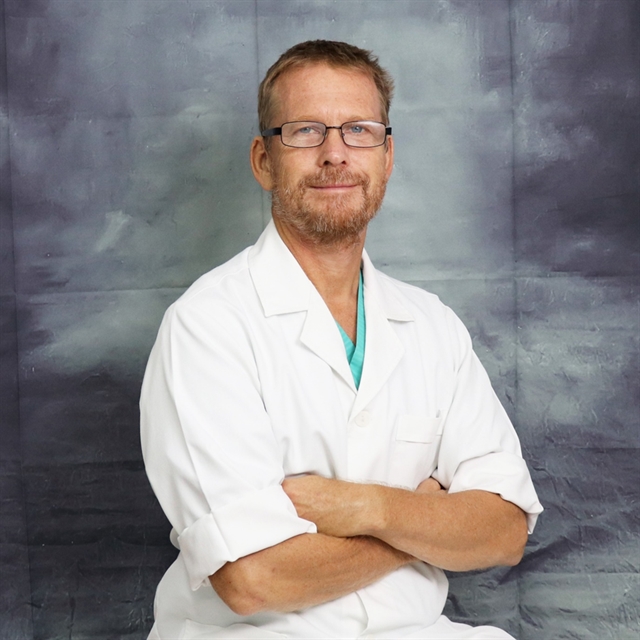It’s not a disease, but a different kind of mind – a story about neurodiversity and attention deficit hyperactivity disorder (ADHD).
by Dr Mattias Larsson*
Lan sat on the edge of her bed, staring at the half-finished homework scattered across her desk. The numbers on the math problems blurred together as her mind drifted—again. "Why is this so hard?" she wondered for what felt like the thousandth time.
For as long as she could remember, school had been challenging. Notes went unfinished, assignments were forgotten, and no matter how hard she focused, her mind would slip away. Teachers called her "bright but distracted". She tried but her thoughts were like butterflies, flitting from one thing to the next. The only time she could concentrate was when she was drawing.
She compensated by staying in constant motion. After school, she threw herself into sports, running until her legs burned, as if she could outpace her restless energy. At night she often lay awake, her thoughts racing until dawn.
The worst part was the feeling that something was wrong with her. Lan’s mother had noticed her predicament and asked. Lan answered that she felt as her brain was working against her, she could not concentrate on the schoolwork and felt a constant need to move, she was irritated when other people continued to talk when she was interrupting, and how she couldn’t "behave" no matter what she did.
The mother had heard that Family Medical Practice had good paediatric care and booked a consultation. At FMP the paediatrician asked Lan questions: "Do you lose track of time? Do you hyperfocus on things you love? Have you always felt this way?" Lan nodded, surprised.
The paediatrician explained the concept of neurodiversity, that different brains compute information in slightly different ways. Autism, Aspergers and ADHD are different forms of neurodiversity. Most biological systems, such as the brain, can be described with normal distributions. Those that are on the edges might not always fit in the official systems, such as school, because they have other ways of learning and computing information.
As the paediatrician outlined ADHD symptoms, Lan saw herself clearly. Inattention: struggling to focus, follow instructions or finish tasks. Distractibility: careless errors, forgetfulness and procrastination. And hyperactivity: restlessness, excessive talking, impulsivity, interrupting others and an inability to stay still or engage quietly.
The doctor noted that while many people may relate to ADHD traits occasionally, a diagnosis requires significant impairment—symptoms must disrupt academic, social or work life. The doctor shared that 5–7 per cent of children have ADHD (one to two children per classroom), with most carrying traits into adulthood, though many adapt with a variety of strategies.

Many girls with ADHD go undiagnosed for years, as their struggles are mistaken for daydreaming or laziness. Photo canva.com
Lan's mother gasped. "That's exactly how I was as a girl!" The doctor smiled. "Many parents realise this during diagnosis. ADHD is highly genetic." Early diagnosis improves academic and social outcomes.
Further tests ruled out physical causes like thyroid issues. When the psychiatrist established the ADHD diagnosis, Lan felt relieved. She realised that it wasn’t a disease, but simply a different kind of mind. Many girls with ADHD go undiagnosed for years, their struggles mistaken for daydreaming or laziness. But with understanding and support, what once held them back can become their greatest asset.
With a combination of medication, therapy and school accommodations, Lan began to thrive. Most importantly, she stopped blaming herself. Learning about famous people with ADHD, like Bill Gates, who’d channelled his hyperfocus into changing the world, helped her see her differences not as weaknesses, but as part of who she was.
At her last follow-up, Lan showed the paediatrician her latest sketchbook. "I still forget my pencil case sometimes," she admitted. "But now I know it’s not because I’m not trying. It’s just how my brain works—and that’s okay." Family Medical Practice

Dr Mattias Larsson. Photo courtesy of FMP Hanoi
*Dr Mattias Larsson is a paediatric doctor at FMP Hanoi and associate professor at Karolinska Institutet and has long experience in research on infectious diseases. He has worked with the Oxford University Clinical Research Unit and the Ministry of Health of Vietnam. He is fluent in English, Swedish, Vietnamese, German and some Spanish.
FMP Healthcare Group operates medical centers in major cities including HCM City, Hà Nội and Đà Nẵng, offering consultations with international doctors, check-up centres and emergency ambulance services.
Visit FMP Hanoi 24/7 at 298I Kim Mã Street, Kim Mã Ward, Ba Đình District.
To book an appointment, please call (024).3843.0748, chat via Whatsapp, Viber or Zalo on +84.944.43.1919 or email hanoi@vietnammedicalpractice.com.